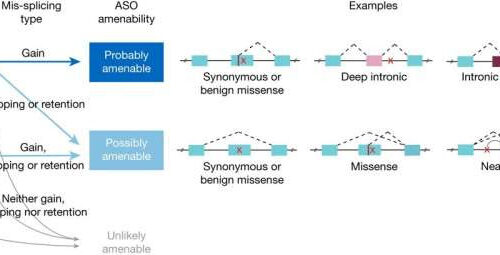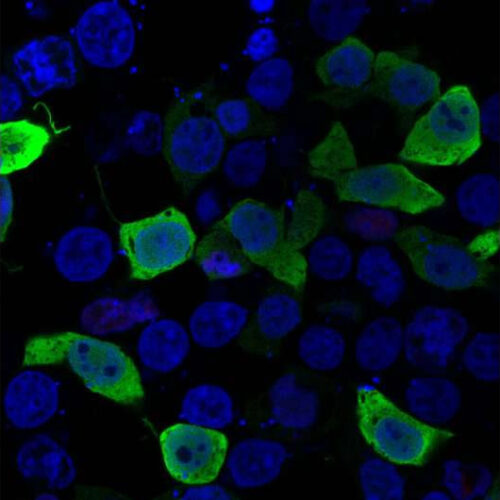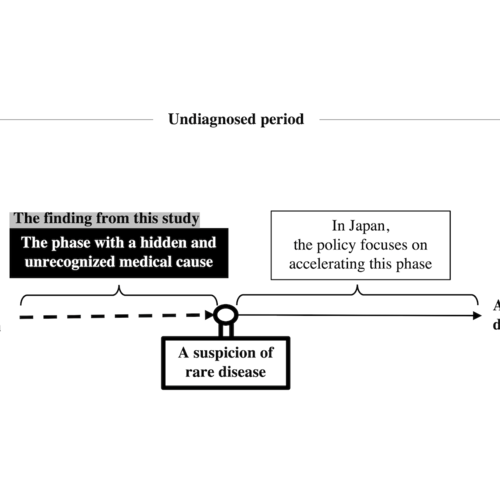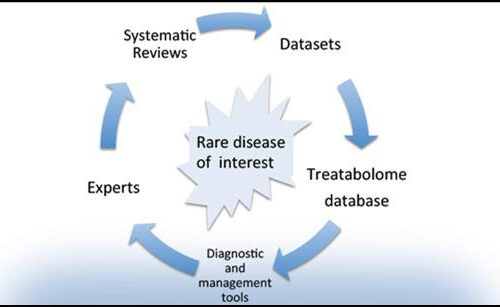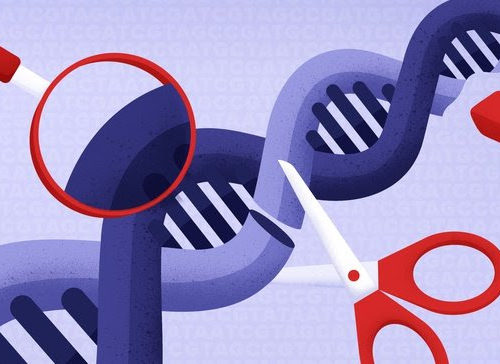by Justin Jackson, Medical Xpress Taxonomy of ASO-amenable variants. Two-step logic for classifying the amenability of genetic variants to splice modulation rescue (probably, possibly or unlikely). First, each variant is evaluated for its damaging impact on either canonical splicing or protein-coding function, on the basis of SpliceAI, MaxEntScan, LaBranchoR and REVEL. Second, each variant is...
Tag: <span>rare diseases</span>
Supposedly rare diseases aren’t as rare as previously thought
UNIVERSITY OF BASEL Rare diseases are often caused by defects in genetic material. If children inherit only a defective gene from one parent, they often are asymptomatic “carriers” – or at least that was the previous assumption. However, a research team from the University of Basel and the University Hospital Basel is now reporting that...
Genetic causes of three previously unexplained rare diseases identified
by The Mount Sinai Hospital Daniel Greene, PhD, and colleagues used a computational approach to identify previously unknown genetic causes of three rare diseases: primary lymphedema, thoracic aortic aneurysm disease, and congenital deafness. In this microscopy image of cells, a mutated form of a protein called ERG, which is present in some lymphedema patients, is...
Using Machine Learning to Predict Rare Diseases
The POPDx model eliminates the need for large patient datasets, giving it the potential to help patients with uncommon diseases. Biobanks – databases with genetic and health information – allow researchers to explore illnesses and study the contributions of genetics and environment to disease trajectory. These investigations have enabled us to conclude factors ranging from the relationship...
Cilia-free stem cells offer a new path to studying rare diseases
A group of rare diseases called ciliopathies — polycystic kidney disease notable among them — emerge from defects in cilia. These are the tiny hairlike structures on the surface of almost every cell type. The specific molecular-level disruptions in cilia that trigger these diseases are poorly understood. In a novel experiment, scientists “knocked out,” or deleted, the cilia...
A dangerous delay: Why it can take years to diagnose life-threatening rare diseases
OSAKA UNIVERSITY IMAGE: DIAGRAM ILLUSTRATING PROBLEMS LEADING TO DELAYED DIAGNOSIS OF RARE DISEASES CREDIT: 2022 M. ISONO ET AL. WHY DOES IT TAKE SO LONG FOR RARE DISEASE PATIENTS TO GET AN ACCURATE DIAGNOSIS?—A QUALITATIVE INVESTIGATION OF PATIENT EXPERIENCES OF HEREDITARY ANGIOEDEMA. PLOS ONE Osaka, Japan – Regular episodes of severe pains in the abdomen...
New molecule holds promise in potential therapies for cancer and rare diseases
by University of California, Irvine Graphical abstract. Credit: Cell Reports (2022). DOI: 10.1016/j.celrep.2022.110641 Researchers at the University of California, Irvine and the Italian Institute of Technology have developed a new molecule, ALY101, that shows promising anti-cancer activity against a wide range of tumor cell types and in mouse models of a common type of melanoma. The findings,...
With CRISPR gene editing, unique treatments begin to take off for rare diseases
By Meeri Kim February 5, 2022 at 9:00 a.m. EST Paddy Doherty remembers his father as a proud, hard-working family man who stayed physically fit for most of his life. A career in construction and various home improvement projects kept him active until his 60s, when Doherty first caught glimpses of a worrying decline in...
Treatabolome project designed to shorten diagnosis-to-treatment time for patients with rare diseases
IOS PRESS IMAGE: SOLVE-RD AIMS AT CHANGING PATIENT LIVES VIA THE ESTABLISHMENT OF A “TREATABOLOME ” DATABASE FLAGGING TREATABLE GENES AND VARIANTS, WHICH WILL CONTRIBUTE TO THE TRANSLATION OF GENOMICS DATA INTO THE CLINICAL.CREDIT: SOLVE-RD. CREDIT: SOLVE-RD Amsterdam, June 1, 2021 – The Treatabolome project is a research initiative to develop a freely available, interoperable...
A gene therapy pipeline takes shape for a cluster of rare diseases
Danielle Ternes/BioPharma Dive AUTHOR Ned Pagliarulo@NedPagliarulo PUBLISHED Feb. 12, 2021 The toxic globules of sugar and fat slowly pile up in the body’s cells, accumulating in blood vessels and in major organs like the kidney and heart. Typically, special-purpose proteins within the cell would tear apart and break down the toxins. But for people with...

